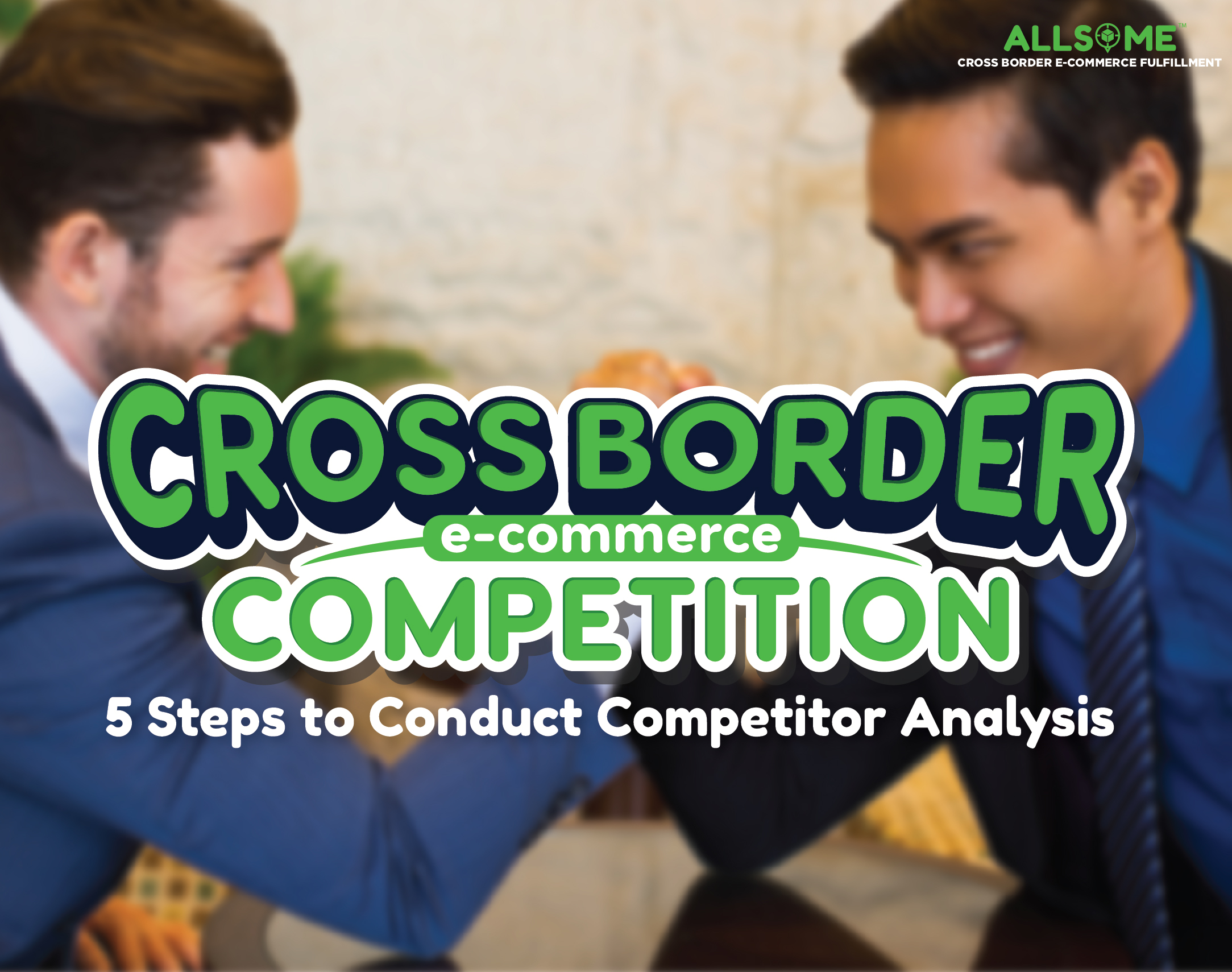
By: Atikah Hanafi
[Note: This is the third part of A Comprehensive Guide for Cross Border E-Commerce Marketing & Branding Strategy series. To read on the previous post, click here: Part 1 & Part 2]
The cross-border e-commerce business is definitely booming with over 57% of online shoppers around the world who make purchases from overseas retailers[1]. Say, you have decided the potential country for you to expand your cross-border e-commerce business. However, identifying your market is just the tip of the iceberg. Stepping into new market also means new competitions. Hence, it is important for you analyse your competitors’ performance in your target region.

Define your e-commerce business
Aristotle said, “Knowing yourself is the beginning of all wisdom”. There is nothing more important than knowing your own business before knowing your enemy. Doing a self-inventory of your current e-commerce business can provide you with insights (and perhaps, boost!) to know your current position as an e-commerce merchant. Use the following steps to help:
- First, list down your company’s strength and weakness. What are your biggest strength and capabilities? What are the aspects of your business you think need more improvement?
- Next, try to outline your business identity. Are you a start-up or an enterprise? What is your company’s mission and direction?
- Lastly, what is it about your brand and business that makes it unique? What makes you different than others?

Identify & categorize your competitors
Identifying your competitors can be a bit tricky especially now there are more e-commerce store that keeps turning up. Here are some of the things that can help you identify your rivals:
- List down keywords that are related to your business and use those keywords to see who is visible on the first page in Google search. Then, also identify whose business is similar with that of your company.
- Look at huge marketplaces such as Amazon, E bay, Alibaba or the ones mostly used in your target region. Look into the merchants that are selling the same products or services.
- Categorizing them into primary, secondary and tertiary competition can help you to focus on those that pose more immediate and direct threat to your business.

Examine competitors’ website & customer experience
Once you identify your competitors, it is time for you to evaluate how they are performing in their website. Try to put yourself in customers’ shoes by shopping at your competitors’ website (and no, you’re not trying to help them gain more money).
Look at their product pages, description and prices. Read the customers’ reviews, comments and ratings to see how well-received their products are in your potential market. Try to click on the product to evaluate the shopping experience it is from customer’s point of view. In fact, you can take a step further by raising problems and questions to their customers service team to see how responsive and effective they are when handling customers.
You can also check at the website’s overall design and user experience.
- Is it easy for user to navigate?
- Does the design appeal to the eyes?
- Does the website provide the necessary contact details?
- Do they have a blog?
- How they communicate calls to action to their customers?

Stalk their social media platforms
According to a research by Ovum, there are over 2.62 billion internet users access social media at least once a month. Hence, social media presence is crucial in digital marketing. That is why it is very important to see how your competitors are doing with theirs and see whether you can come up with better ideas than the ones they already had.
If their social media presence is strong with an equally active engagement from their audience, that can mean two thing – the market is responding well to the kind of service or product that you are selling and you have a lot to do to step up the game. On the other hand, if your rival barely utilised the social media platform, you can use this gap to your advantage to win potential customers. Considering looking at all social media platforms namely Facebook, Instagram, Twitter, LinkedIn, Snapchat, etc. What is the quality of their copy? How do they engage with their followers? Do they run promotional campaigns via social media?

Analyse & use the findings
After evaluating their modus operandi more closely, you may know have better insights of your competitors’ strengths and weaknesses. Save your findings in a spreadsheet and compare them with your own business. Use the findings to create a better marketing plan to improve your brand.
Nonetheless, knowing your rivals alone is not enough, you must also work on establishing your own brand. We’ll talk more on this aspect in the next post. Stay tuned!
AllSome Fulfillment, we provide cross border fulfilment services for modern online sellers. Your branding is important and let’s grow it together. AllSome Fulfillment, your dedicated fulfilment team!




Leave a Reply